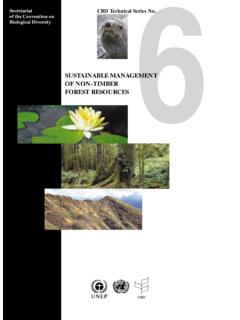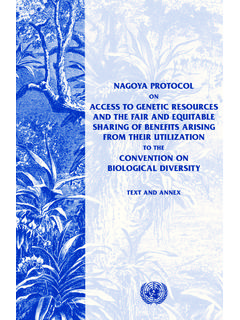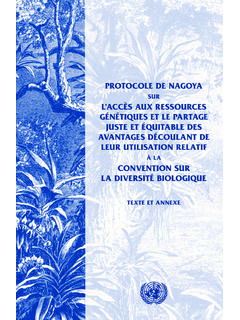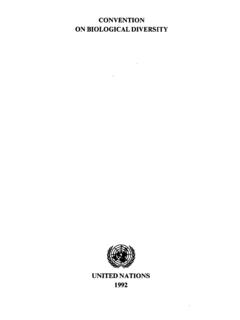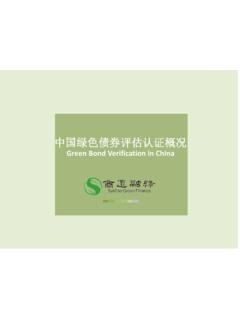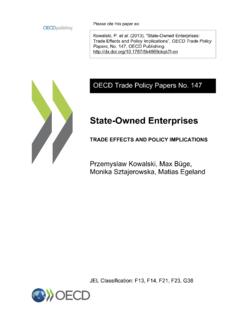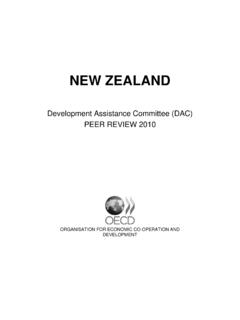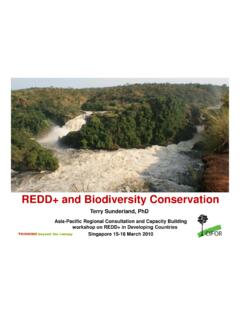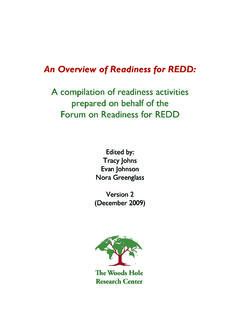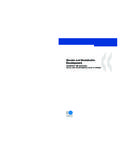Transcription of Strategic Communication for Sustainable Development - …
1 Rioplus - Environmental Policy and Promotion of Strategies for Sustainable DevelopmentStrategic Communicationfor Sustainable DevelopmentA conceptual overview3 Strategic Communicationfor Sustainable DevelopmentA conceptual overview4 ImpressumEditorDeutsche Gesellschaft f r TechnischeZusammenarbeit (GTZ) GmbHPostbox 5180D-65726 Eschborn, GermanyInternet and Infrastructure DivisionGTZ RioplusEnvironmental Policy and Promotion of Strategies for Sustainable DevelopmentTulpenfeld 2D-53113 Bonn, GermanyPhone +49 - 228 - 98 53 30 Fax +49 - 228 - 98 57 018eMail and TextManfred OepenResponsible and EditingSusanne WillnerLayout; omas Kr , ReutlingenPhotos and IllustrationsIf not stated otherwise, all illustrations were provided by GTZ / GTZ-Bildarchiv, ACT and by Schneller Druck, ReutlingenEschborn 2006 ContactManfred OepenACT - Appropriate Communication in DevelopmentJl. Buncit Persada 1, Jakarta 12740, IndonesiaPhone +62 - 21 - 79 72 204 +62 - 21 - 39 84 29 67 Mobile +62 - 813 - 28 60 44 49eMail Susanne WillnerGTZ Rioplus - Environmental Policy and Promotion of Strategies for Sustainable DevelopmentTulpenfeld 2, 53113 Bonn, GermanyPhone +49 - 228 - 98 53 320 Fax +49 - 228 - 98 57 018eMail 71 Orientation 9 Development 9 Communication 9 Communication problems 9 GTZ Rioplus working process 10 Defi nitions 122 Strategies 14 What are strategies for Sustainable Development ?
2 14 Key principles for strategies for Sustainable Development 153 Point of Departure 18 Myths and realities about Communication 18 Lessons learned 204 The Concept 22 Why Strategic Communication is so special 22 ; e added value of Strategic Communication 23 ; e fi ve branches of Strategic Communication for Sustainable Development 26 Branch 1: Development and environmental Communication 27 Branch 2: Social marketing 28 Branch 3: Non-formal and environmental education 31 Branch 4: Civil society mobilization 32 Branch 5: Confl ict management and negotiation 34 ; e ten steps of Strategic Communication for Sustainable Development 36 Step 1: Situation analysis 36 Step 2: Audience and KAP analysis 37 Step 3: Communication objectives 39 Step 4: Strategy design 40 Step 5: Participation of Strategic groups 40 Step 6: Media selection and mix 41 Step 7: Message design 42 Step 8: Media production and pretesting 42 Step 9: Media use 43 Step 10: M&E and process documentation 44 Stratcom case studies from Vietnam 445 Best Practices 48 Involving the people 48 Addressing local needs 50 Managing a Sustainable Development initiative 51 Sharing responsibility through alliances 51 Mainstreaming Sustainable Development 53 Do s and Don ts of Strategic Communication for Sustainable Development 556 Selected Literature and Abbreviations 5667 ForewordSince the Rio Conference in 1992, GTZ has been working on Communication issues in relation with Sustainable Development .
3 GTZ was among the pioneers in environmental education and com-munication in the mid 1990s, and built Strategic partnerships with IUCN s Commission for Educa-tion and Communication (CEC), OECD s Devel-opment Assistance Committee (DAC) and others. Today, environmental Communication has become an established fi eld in itself and as such can more easily relate to the decades of experiences, lessons learned and well-established methods and tools of Communication strategies in other fi elds: agricul-tural extension, health and sanitation, poverty al-leviation, or social marketing for condoms in AIDS campaign. What they all have in common is a set of generic principles and steps established in develop-ment Communication . ; is trend was enforced by the focus on Sustainable Development with its social, economic and ecological dimension, putting the environment in a context as well. Strategy processes for Sustainable Development are a complex task that put people right at the center of attention.
4 ; eir analyses, dialogue, images, compe-tences, planning, investments and actions are to de-fi ne a society s joint economic, social and ecological goals. Many countries use conceptual umbrellas such as Poverty Reduction Strategies (PRS) or National Strategies for Sustainable Development (NSSD). Strategic Communication in this context is sup-posed to be a pre-requisite and an instrument of eff ective policy making and public participation: from formulating a vision, negotiating and decision making, developing and implementing plans to monitoring impacts. Communication serves infor-mation exchange, establishing consensus among divergent opinions and interests, and facilitates the building of know-how, decision making and action capacities at the heart of the delicate cooperation between government, civil society groups and the private sector. Consequently, OECD and UNDP regard Communication and awareness raising as one of nine core mechanisms to support strategy processes for Sustainable Development .
5 In a sense, two-way Communication is the lifeblood of any strategy (see OECD 2001). Without it, a strategy will not succeed because cooperation and collabora-tion among key stakeholders depend on , despite its acknowledged impact, com-munication is rarely integrated in Development cooperation programs as a Strategic tool. For this reason an Interest Group on Strategic Communica-tion for Sustainable Development was established. ; e group, with GTZ Rioplus in the lead, compris-es members of GTZ, other German Development cooperation agencies, and IUCN-CEC. ; is paper presents the fi nal results of the Interest Group s work and will be presented at the World Congress on Communication for Sustainable Development (WCCD), organized by the World Bank and FAO in 2006. ; is process and this paper were possible thanks to the support and the funding from the Federal Ministry for Economic Cooperation and Development , Division Environment and Sustain-able Use of Natural Resources.
6 ; e manual is envisioned as a tool for policy-makers and planners to obtain an overview of the issues involved. GTZ Rioplus and the Inter-est Group hope that this tool will quickly and convincingly show how Strategic Communication can become an integrated component of policies, strategies and projects, and thereby help ensure that adequate human and fi nancial resources are allocated to this Communication , in the context of this pa-per, is understood as a dynamic process, integrated in a large-scale initiative that comprises multi-disci-plinary and social marketing, non-formal education and public participation, thrives on acting people, aims at the innovative and Sustainable change of practices, behaviors and lifestyles, guides commu-nication processes and media interventions within and among social groups, and is a pre-requisite and a tool for change at the same Development is seen as a process of change guided by a number of values or principles. Caring for the Earth, a Strategic plan for a sustain-able future prepared by IUCN, UNEP and WWF defi nes it as: a kind of Development that provides real improvements in the quality of human life and at the same time conserves the vitality and diversity of the Earth.
7 Living sustainably depends on a duty to seek harmony with other people and with nature. ; e guiding rules are that people must share with each other and care for the Earth. Humanity must take no more from nature than nature can replen-ish. ; is in turn means adopting lifestyles and Development paths that respect and work within nature s limits. It can be done without rejecting the many benefi ts that modern technology has brought, provided that technology also works within those limits (IUCN, UNEP and WWF 1991).For more information on defi nitions of the terms introduced in this paper, see particularly Part 1 about the fi ve branches of Strategic Communication and the defi nitions page on TomowskiDirector Environment and Infrastructure9 OrientationDevelopment Strategy processes for Sustainable de-velopment are a complex task that put people right at the center of attention. ; eir analyses, dialogue, images, competences, planning, investments and ac-tions are to defi ne a society s joint economic, social and ecological goals.
8 Many countries use conceptual umbrellas such as Poverty Reduction Strategies (PRS) or National Strategies for Sustainable Devel-opment (NSSD). Communication Strategic Communication in this context is supposed to be a pre-requisite and an instrument of eff ective policy making and public participation: from formulating a vision, negotiat-ing and decision making, developing and imple-menting plans to monitoring impacts. Commu-nication serves information exchange, establishing consensus among divergent opinions and interests, and facilitates the building of know-how, decision making and action capacities at the heart of the delicate cooperation between government, civil society groups and the private sector. Consequently, OECD and UNDP regard Communication and awareness raising as one of nine core mechanisms to support strategy processes for Sustainable develop-ment. In a sense, two-way Communication is the lifeblood of any strategy. Without it, a strategy will not succeed because cooperation and collaboration among key stakeholders depend on problems Friends of the Envi-ronment Go Shopping by Car , this is how news-papers commented on environmental awareness in Germany in 2004: though 70% of all Germans approved of reducing individual car use, 45% took their cars to the street even on short distances.
9 Poli-ticians quickly stated they want to change this be-havior by means of education and Communication that makes people experience how their individual behavior aff ects the environment . Such statements are guided by a belief in a shortcut between Said and Done . But, as the proverb shows, there are no shortcuts: high knowledge and positive attitudes are not enough. What counts is changes in the actual practice of the people concerned. Moreover, the concept of Sustainable Development (SD) neither provides a clear vision where to go and how to get there, nor does it address the unequal power and interests behind its economic, social and ecological dimensions. While SD is defi ned long-term, the political and economic systems functions on the basis of short-term impulses. Journalists and public relations experts such as the WWF-UK campaigns director have labeled the term SD a Communication problem in itself: Sustainable Development means absolutely nothing to most people and never will.
10 But people do relate to SD once the term is translated to my life , my work , my investments , my health or my future . ; e words are boring. ; e subject isn t , concludes leading British journalist Geoff rey Lean. ; e question, therefore, is how this turn-off term called Strategy Processes for Sustainable Development could be marketed eff ectively.; e media play a role in this dilemma. Analysis of media treatment of one of the most important Mil-lennium Development Goals (MDG), the Poverty Reduction Strategy Papers (PRSPs), has shown a very low or poor level of coverage. ; is concerns the extent to which they have been reported in the media, or the extent to which media has provided a forum for public debate. In general, analysis has suggested a very low level of awareness of PRSP processes within the media, lack of technical skills within journalism to report on economic Development and sectoral specifi c issues such as health, education or agriculture, poor relationship between government and journalists hindering investigative and strong coverage of PRSP related issues, lack of interaction between NGOs and media which could lead to greater understanding and engagement by media, media outlets increasingly demanding payment for coverage of Development related issues,Said Done!
